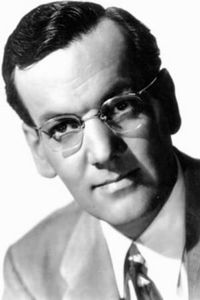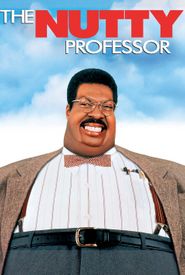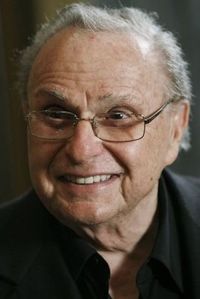Alton Glenn Miller, a renowned figure in the world of music, was born on March 1, 1904, in Clarinda, Iowa, to Lewis Elmer Miller and Mattie Lou Cavender Miller, a couple who would play a pivotal role in shaping his early life and musical aspirations.
As a young boy, Glenn Miller's father, Lewis Elmer Miller, introduced him to the world of music, initially with a mandolin, which he would later trade in for an old horn, a decision that would ultimately lead him to discover his true calling as a musician.
In 1916, Miller made the transition to the trombone, an instrument that would become an integral part of his musical identity and a cornerstone of his future success.
After completing his education, Miller dropped out of the University of Colorado in 1923, a decision that would ultimately lead him to pursue a career in music.
Following his departure from academia, Miller made the bold move to Los Angeles, a city that would provide him with the opportunity to join Ben Pollack's band, an ensemble that would serve as a launching pad for his music career.
As a member of Pollack's band, Miller honed his skills, playing gigs and attending auditions, a period that would prove to be a crucial stepping stone in his journey to become one of the most celebrated musicians of his time.
In the year 1928, Miller made a significant move to the city of New York, where he actively participated in various session gigs and created intricate orchestrations, concurrently dedicating himself to the pursuit of musical knowledge under the guidance of the renowned Russian musician and mathematician, Joseph Schillinger. Schillinger, who was also the instructor of the celebrated American composer, George Gershwin, played a pivotal role in Miller's artistic development.
Miller's creative endeavors led to the conception of the iconic song "Moonlight Serenade", which originated as a simple practice exercise but ultimately evolved into a resounding success. Subsequently, he joined the illustrious Dorsey Brothers' Orchestra for a period of one year, honing his skills and gaining valuable experience. Following this stint, Miller took the initiative to form an American band for the esteemed British bandleader, Ray Noble. This marked a significant milestone in his career, as he made his debut at the prestigious Rainbow Room, situated within the iconic Rockefeller Center in New York City.
The distinctive sonic signature of his musical ensemble was meticulously crafted through pioneering approaches to orchestration, a hallmark of his style being the "crystal chorus" – a harmonious blend of instruments that added a unique layer of depth and complexity to his music.
Miller made his debut recording with his own band for Columbia Records on April 25, 1935, with the instrumental track "Solo Hop" eventually ascending to the Top Ten, marking a significant milestone in his career.
In 1937, he ventured into the uncharted territory of organizing his own orchestra under his name, a bold move that ultimately proved unsuccessful. Undeterred, he regrouped and reorganized his ensemble in 1938, this time incorporating a diverse array of talented musicians into his collective, setting the stage for a new era of creative exploration and artistic growth.
Glenn Miller's remarkable music career reached new heights in 1939, with an astonishing 17 chart-topping hits that year alone. These notable successes included the iconic "Sunrise Serenade", the enchanting "Moonlight Serenade", the celestial "Stairway to the Stars", and the whimsical "Over the Rainbow". This impressive streak continued into the following years, with 31 Top Ten hits in 1940 and 11 in 1941.
Among his numerous chart-topping successes, Miller's number one hits stood out, featuring the memorable "Song of the Volga Boatmen", the romantic "You and I", and the energetic "Chattanooga Choo Choo", which was prominently featured in his first film, "Sun Valley Serenade".
Noted musician Glenn Miller's professional journey was marked by his collaborations with renowned vocalists, including Tex Beneke, Ray Eberle, and the Modernaires, with the talented Paula Kelly. On February 10, 1942, Miller made history by being awarded the very first-ever "Gold record" for his iconic composition, "Chattanooga Choo Choo", a monumental achievement that paved the way for future musical successes. In the same year, he went on to score an impressive 11 Top Ten hits, solidifying his position as a leading figure in the music industry. Despite being beyond the age of draft eligibility, Miller felt a strong sense of patriotism and a desire to utilize his exceptional talents to contribute to the war effort. His dedication and commitment ultimately earned him a spot in the Army, where he proudly held the rank of Captain.
Miller, a visionary leader, embarked on a remarkable endeavor by forming a marching band and a large dance band, comprising an impressive ensemble of over two dozen skilled jazz musicians and 21 accomplished string players.
As the leader of the Glenn Miller AAF Band, Miller oversaw hundreds of electrifying live performances and radio broadcasts, including the popular "I Sustain the Wings" radio shows.
In June 1944, Miller took his talented band to Britain, where they thrilled audiences with their performances for allied troops and participated in radio shows, leaving a lasting impression on those who witnessed their artistry.
Tragically, Miller's life was cut short, but his legacy lived on through his remarkable music. His final recording, a collection of 20 new songs, was made just weeks before his untimely passing and was eventually released in 1995, allowing future generations to appreciate his enduring talent.
After the triumphant liberation of France, Glenn Miller, a renowned musician, sought to bridge the gap between his music and the brave troops stationed on the European continent. He orchestrated a plan to have his esteemed band relocated to the City of Light, Paris, and made arrangements for the full orchestra's arrival.
However, a sudden bout of inclement weather thwarted his travel plans, forcing Miller to wait patiently for more favorable skies. Undeterred, he received an unexpected invitation from a fellow officer who was scheduled to fly to Paris on an unauthorized mission. With a sense of adventure and a dash of optimism, Miller accepted the offer and boarded the plane, hoping to beat the weather and arrive in Paris ahead of his band.
Tragically, the plane never reached its destination, and on December 24, 1944, the US Army Air Forces officially reported Miller and his crew as Missing in Action (MIA),assuming that the aircraft had met its demise in the treacherous waters of the English Channel.
In the year 1985, the British Ministry of Defence endeavoured to provide a detailed explanation for the enigmatic disappearance of Miller, proposing that his aircraft was inadvertently struck by a British bomb, which had been released into the waters by RAF pilots returning from a mission.
This theory was later challenged by subsequent research, which offered an alternative hypothesis suggesting that the plane's fuel system may have been compromised due to icing caused by the cold air over the English Channel.
























